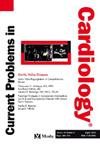Heart failure with microvascular dysfunction: Insights from a propensity-matched analysis of diabetic retinopathy in heart failure with reduced ejection fraction
IF 3.3
3区 医学
Q2 CARDIAC & CARDIOVASCULAR SYSTEMS
引用次数: 0
Abstract
Background
Diabetic retinopathy, a microvascular complication of diabetes, is a significant marker of systemic vascular damage, which has been linked to increased cardio-renal disease risks. This study investigates the impact of diabetic retinopathy on all-cause mortality and adverse cardiovascular and renal outcomes in patients with established heart failure with reduced ejection fraction (HFrEF) using real-world data.
Methods
Using data from January 1, 2012, to December 31, 2021, we conducted a propensity-matched analysis of two cohorts of patients with HFrEF and diabetes without chronic kidney disease (CKD, estimated glomerular filtration rate >60 mL/min/1.73 m²), differentiated by the presence or absence of diabetic retinopathy diagnosis in the TriNetX platform. The primary outcome was all-cause mortality, with secondary outcomes including acute HF, CKD progression, major adverse cardiovascular events, stroke, in-patient hospitalizations, venous thromboembolism (VTE), and peripheral arterial disease (PAD).
Results
Following propensity score matching across demographics and clinical variables, each cohort included 15,218 patients. Acute HF was more common in the retinopathy vs non-retinopathy cohort (HR: 1.13, 95 % CI: 1.06–1.20). Results also showed significant increased risks for CKD progression (HR: 1.39, 95 % CI: 1.30–1.50), stroke (HR: 1.18, 95 % CI: 1.08–1.28), as well as PAD (HR: 1.58, 95 % CI: 1.42–1.76) for patients with diabetic retinopathy.
Conclusion
Diabetic retinopathy is associated with an increased risk of adverse cardio-renal outcomes in patients with established HFrEF.
心力衰竭伴微血管功能障碍:来自糖尿病视网膜病变伴射血分数降低心力衰竭倾向匹配分析的见解。
背景:糖尿病视网膜病变是糖尿病的微血管并发症,是全身性血管损伤的重要标志,与心肾疾病风险增加有关。本研究使用真实世界数据调查了糖尿病视网膜病变对心力衰竭伴射血分数降低(HFrEF)患者全因死亡率和不良心血管及肾脏预后的影响。方法:使用2012年1月1日至2021年12月31日的数据,我们对两组HFrEF和糖尿病患者进行了倾向匹配分析,这些患者没有慢性肾脏疾病(CKD,估计肾小球滤过率bbb60ml /min/1.73m²),在TriNetX平台上通过是否诊断为糖尿病视网膜病变进行区分。主要结局是全因死亡率,次要结局包括急性心衰、CKD进展、主要不良心血管事件、中风、住院、静脉血栓栓塞(VTE)和外周动脉疾病(PAD)。结果:根据人口统计学和临床变量的倾向评分匹配,每个队列包括15,218例患者。急性心衰在视网膜病变组比非视网膜病变组更常见(HR: 1.13, 95% CI: 1.06-1.20)。结果还显示,糖尿病视网膜病变患者CKD进展(HR: 1.39, 95% CI: 1.30-1.500)、卒中(HR: 1.18, 95% CI: 1.08-1.28)以及PAD (HR: 1.58, 95% CI: 1.42-1.76)的风险显著增加。结论:糖尿病视网膜病变与HFrEF患者不良心肾结局的风险增加相关。
本文章由计算机程序翻译,如有差异,请以英文原文为准。
求助全文
约1分钟内获得全文
求助全文
来源期刊

Current Problems in Cardiology
医学-心血管系统
CiteScore
4.80
自引率
2.40%
发文量
392
审稿时长
6 days
期刊介绍:
Under the editorial leadership of noted cardiologist Dr. Hector O. Ventura, Current Problems in Cardiology provides focused, comprehensive coverage of important clinical topics in cardiology. Each monthly issues, addresses a selected clinical problem or condition, including pathophysiology, invasive and noninvasive diagnosis, drug therapy, surgical management, and rehabilitation; or explores the clinical applications of a diagnostic modality or a particular category of drugs. Critical commentary from the distinguished editorial board accompanies each monograph, providing readers with additional insights. An extensive bibliography in each issue saves hours of library research.
 求助内容:
求助内容: 应助结果提醒方式:
应助结果提醒方式:


